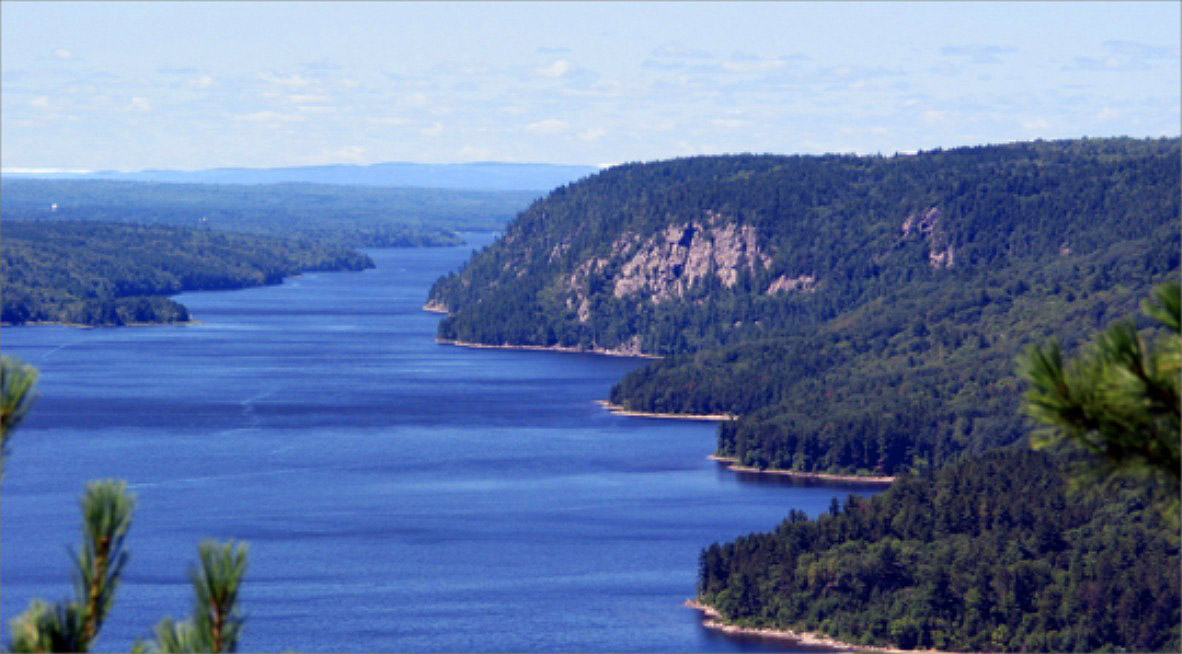
Ten Things to Know About the Giant Radioactive Waste Dump Coming to the Ottawa River
by Lynn Jones, Ottawa River Institute
The Ottawa River is a Canadian Heritage River that flows past Parliament Hill. It has untold value as a beautiful natural and historical treasure. The river is sacred for the Algonquin People whose ancestral territory it defines.
The Canadian Nuclear Safety Commission (CNSC), also known by many Canadians as Canada’s “nuclear industry-captured regulator,” recently approved a construction license for a giant radioactive mound beside the Ottawa River on the property of Chalk River Laboratories, 180 km northwest of Ottawa.
The giant radioactive mound is known as the ‘Near Surface Disposal Facility’ or “NSDF.”
1. The site is less than one km from the Ottawa River
• The NSDF site was chosen for its proximity to existing leaking waste sites at Chalk River; it is on the side of a hill, partly surrounded by wetlands that drain into the Ottawa River less than one kilometre away.
• The Ottawa River is a major fault line and the bedrock at the site is porous and fractured. The site is tornado and earthquake prone.
2. The enormous mound would hold one million tons of radioactive and other hazardous waste
• The NSDF would rise up to seven storeys in height and cover an area the size of 70 NHL hockey rinks
• Waste destined for the mound includes radioactive materials like plutonium heavy metals, dioxin, PCBs and arsenic (more)
3. Algonquin First Nations and the Assembly of First Nations are opposed to the NSDF
• Chiefs representing 10 of 11 Algonquin First Nations spoke out against the construction of the NSDF in their unceded territory at a press conference in Ottawa on June 20, 2023
• The Assembly of First Nations passed resolutions opposing the NSDF in 2018 and 2023
4. Drinking water for millions of Canadians is threatened by the dump
• The Ottawa River is the drinking water source for millions of Canadians downstream, including Ottawa, Gatineau and parts of Montreal
• The mound is expected to leak during operation and break down due to erosion after a few hundred years
• Contaminated water containing large quantities of tritium (radioactive hydrogen) and smaller quantities of other radioactive substances, such as plutonium, will enter the Ottawa River.
5. There is no safe level of exposure to the radiation that would leak into the Ottawa River from the mound
• All of the escaping radioactive materials would increase risks of birth defects, genetic damage, cancer and other chronic diseases.
6. Experts say the wastes will remain radioactive and hazardous for thousands of years
• Experts say the waste proposed for the facility requires underground storage because it will be radioactive for such a long time. Twenty-five out of the 31 radionuclides listed in the licensed inventory for the mound are long-lived, with half-lives from thousands to millions of years.
• The radioactive waste would outlive the mound facility for many millennia
7. More than 140 municipalities in Quebec and Ontario are opposed to the NSDF
• More than 140 municipalities, including Pontiac County, Ottawa, Gatineau and Montreal, have passed resolutions of opposition or serious concern about the proposed project.
• The City of Ottawa resolution specifically asked for imports of waste to the Ottawa Valley to be stopped; the request was ignored
8. Canadian taxpayers are paying, but a multinational consortium is calling the shots
• In 2015, a multinational consortium was contracted to run the Chalk River Laboratories and to quickly and cheaply reduce the multi-billion dollar cleanup liability
• Since the consortium took over, costs to Canadian taxpayers for the operation and cleanup at Canada’s nuclear labs have ballooned from $336 million dollars per year to over $1.5 billion per year;
9. Construction of the NSDF would destroy critical habitat for protected species.
• The NSDF site is very rich in biodiversity due to the fact that it has been fenced off to humans for 80 years. Proximity to the Ottawa River and Perch Lake make it a good feeding ground for larger mammals.
• Three active bear dens and habitats for several protected species (including species of turtles, bats, songbirds, and Eastern Wolves) would be destroyed by the construction of the NSDF.
10. The waste needs to be cleaned up but there are better ways to do so.
• Canada could build world-class facilities for managing radioactive waste that would keep Canadians safe and provide good jobs in the nuclear industry, safely managing and containing the waste for generations to come.
• World-class facilities would be sited away from drinking water sources; wastes would be carefully packaged, labelled and placed in an underground facility; they would be retrievable so future generations could monitor and repackage them as needed.
Two legal challenges to the approval of the construction license for the NSDF were launched in February 2024, one by the Kebaowek First Nation and the other by Concerned Citizens of Renfrew County and Area, Ralliement contre la pollution radioactive and the Canadian Coalition for Nuclear Responsibility.
Readers who object to their tax dollars funding this dump should contact their federal MPs and let them know.
Lynn Jones is a founding member of the Ottawa River Institute, a non-profit, charitable organization based in the Ottawa Valley. ORI’s mission is to foster sustainable communities and ecological integrity in the Ottawa River watershed. A more detailed version of this article is available at https://concernedcitizens.net/
PHOTO: Courtesy Lynn Jones









